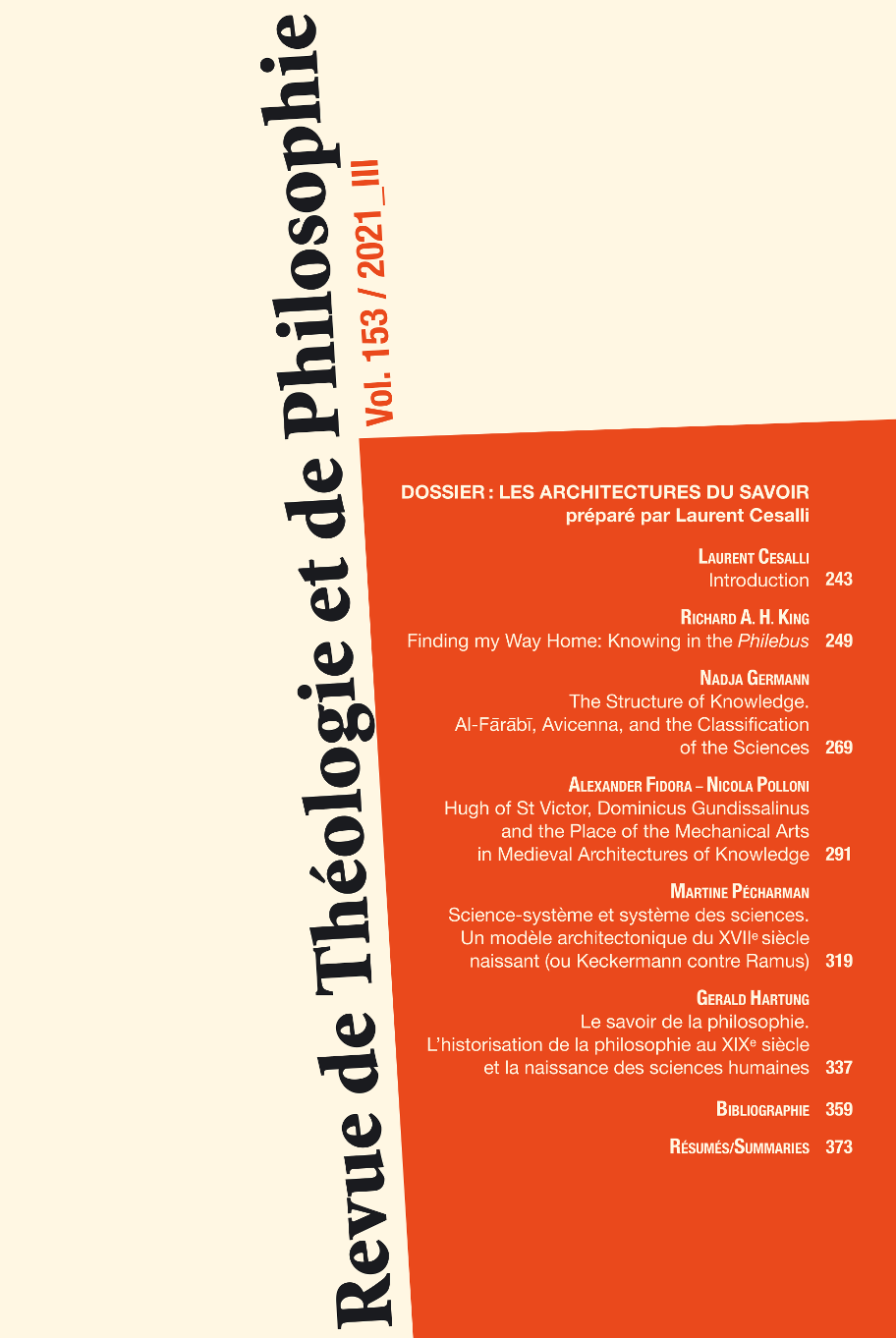Hugh of St Victor, Dominicus Gundissalinus and the Place of the Mechanical Arts in Medieval Architectures of Knowledge
Abstract
This contribution engages with the problematic position of the mechanical arts within medieval systems of knowledge. Superseding the secondary position assigned to the mechanical arts in the Early Middle Ages, the solutions proposed by Hugh of St Victor and Gundissalinus were highly influential during the thirteenth century. While Hugh’s integration of the mechanical arts into his system of knowledge betrays their still ancillary position as regards consideration of the liberal arts, Gundissalinus’s theory proposes two main novelties. On the one hand, he sets the mechanical arts alongside alchemy and the arts of prognostication and magic. On the other, however, using the theory put forward by Avicenna, he subordinates these “natural sciences” to natural philosophy itself, thereby establishing a broader architecture of knowledge hierarchically ordered. Our contribution examines the implications of such developments and their reception afforded at Paris during the thirteenth century, emphasising the relevance that the solutions offered by Gundissalinus enjoyed in terms of the ensuing discussions concerning the structure of human knowledge.
How to Cite
More Citation Formats
